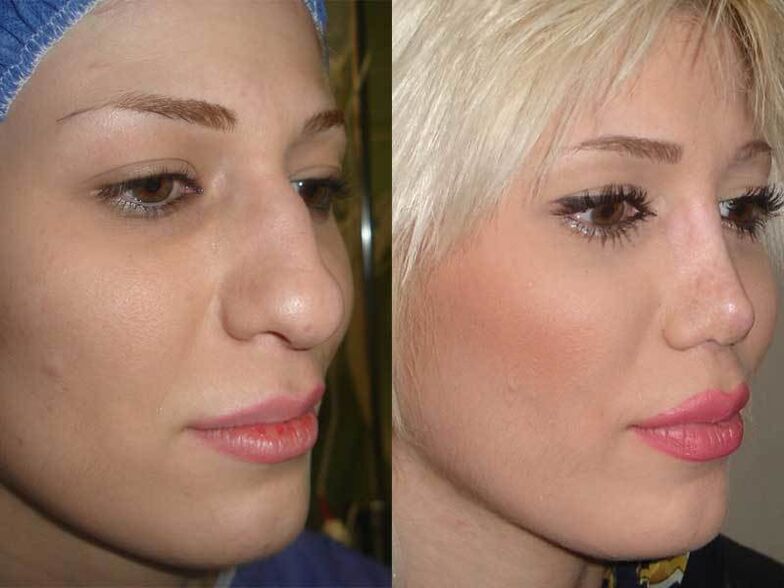Nose tip rhinoplasty involves improving the shape of the tip of the nose and/or eliminating tip defects. Surgery may require manipulation of cartilage, soft tissue, and columella, depending on the anatomical characteristics and desired outcome.

Thanks to rhinoplasty at the tip of the nose, you can change:
- Thickness of the area above the nose tip
- Prominent tip (distance from face)
- Projection of the tip of the nose (the angle between the upper lip and the tip of the nose)
- location of nasal septum
Nose tip surgery is more complicated than it might seem at first glance. The surgeon needs to plan his actions very precisely - otherwise the results may be the opposite of what was expected.
The bone and cartilage structure of the nose tip has a major impact on its appearance. Unsuccessful intervention will result in a deformed shape not only of the tip, but of the entire nose.
How is tip rhinoplasty performed?
The surgery is performed under local or general anesthesia and takes 1 to 2-3 hours. It's hard to single out any typical moment in rhinoplasty—nearly every procedure is unique in its own way.
Depending on the anatomy of the nose, the thickness and shape of the cartilage, the strength of the tissue and other individual characteristics of the patient, the same task faced by the surgeon in different situations will have different solutions.
The preparation and recovery process after surgery is not much different from traditional rhinoplasty. Smoking and some drugs that affect coagulation and suture healing must be stopped in advance, and a physical examination to identify possible contraindications.
In the first few days after a rhinoplasty, swelling, bruising, and pain may occur. Recovery after surgery takes about 1-2 weeks, after which it is recommended to protect the nose from the body and high blood pressure for 2-3 weeks (especially exercise restriction),
How much does rhinoplasty cost
The price of surgery depends on the nature of the change, the qualifications of the doctor and the prestige of the clinic, among many other factors.




















